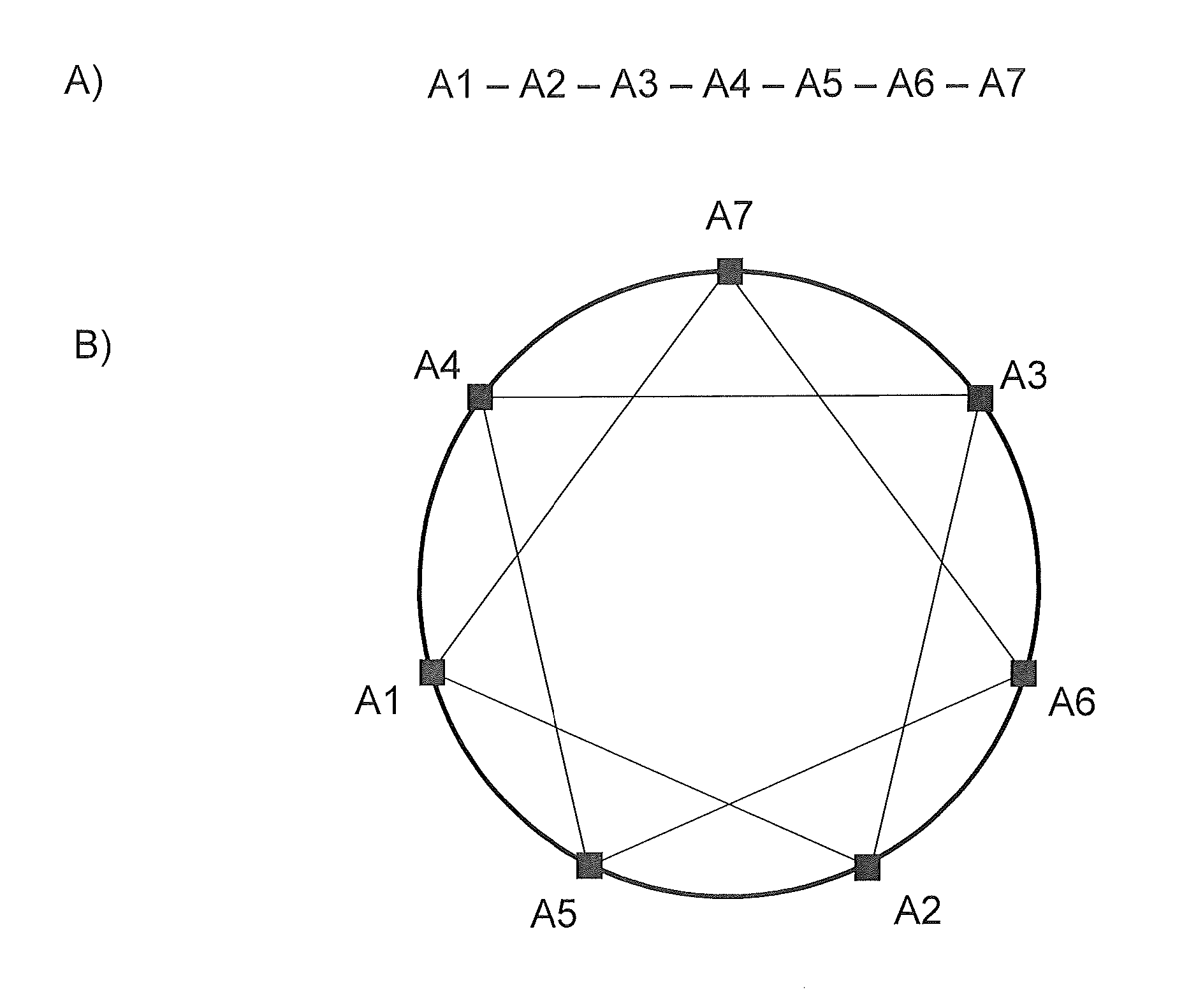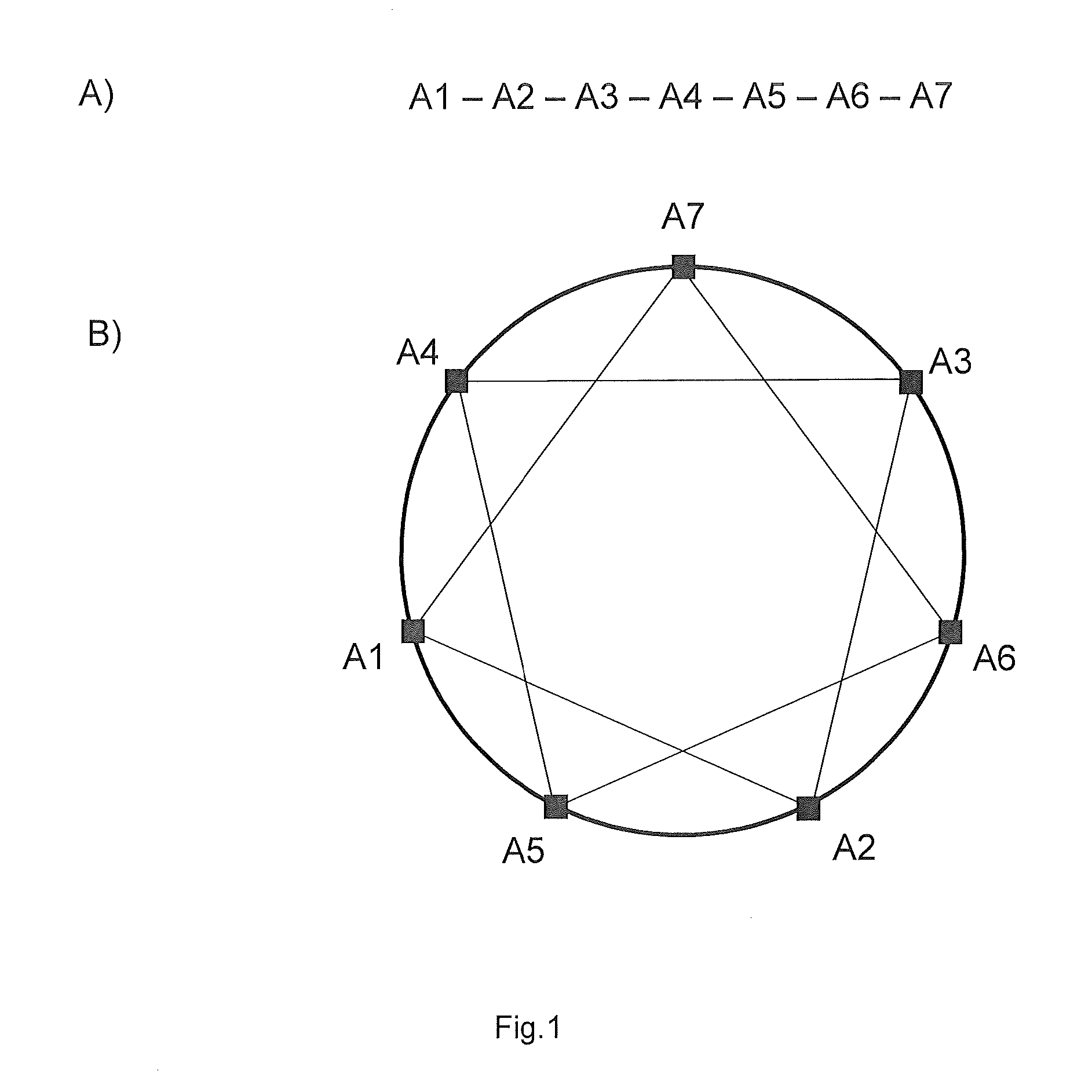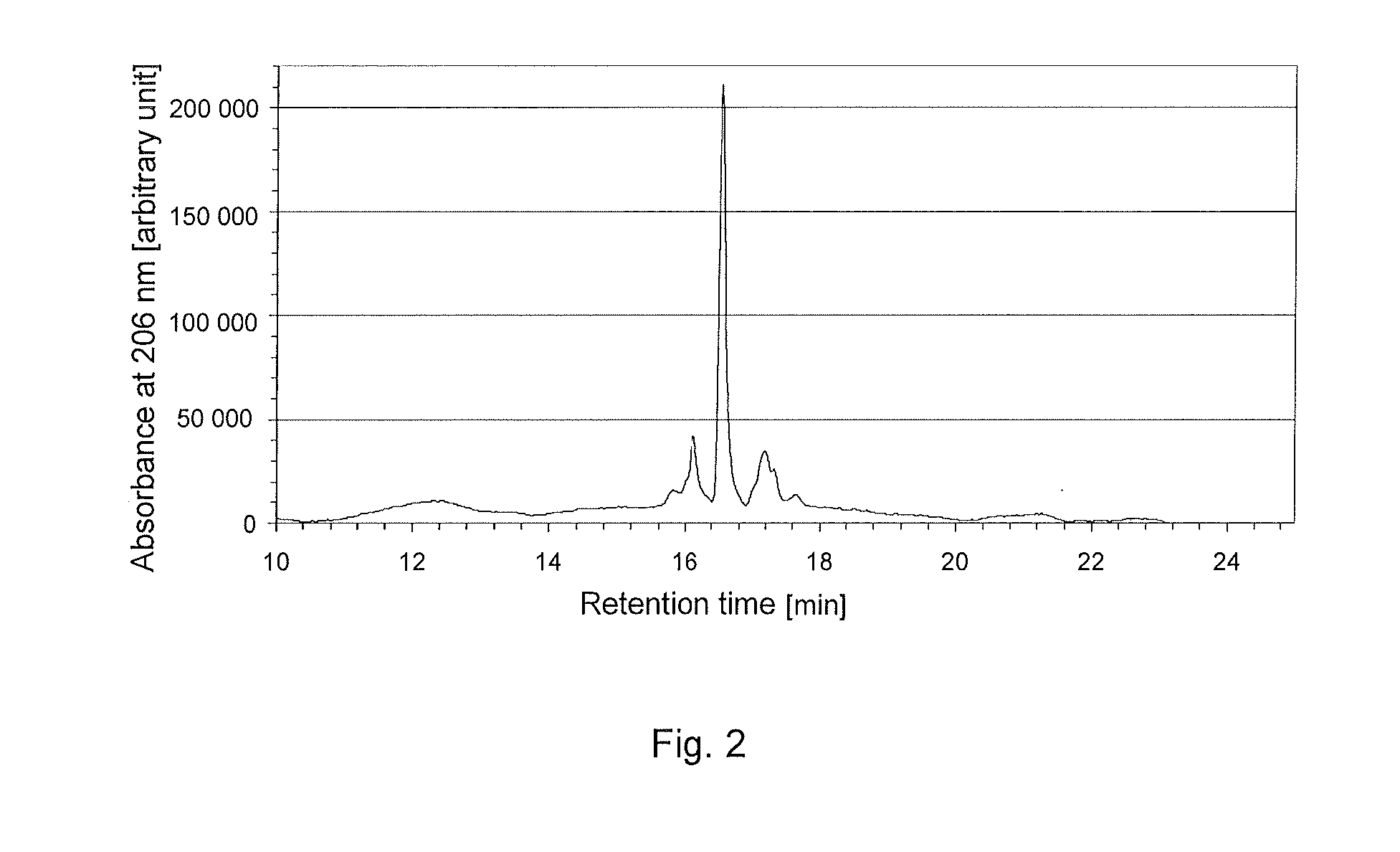Recombinant production of peptides
a technology of peptides and peptides, which is applied in the direction of peptides, drug compositions, dna/rna fragmentation, etc., can solve the problems of inefficient production of peptides using previously used methods
- Summary
- Abstract
- Description
- Claims
- Application Information
AI Technical Summary
Problems solved by technology
Method used
Image
Examples
example 1
Production of Peptide ZnO (SEQ ID NO:20)
[0197]The peptide ZnO is a peptide derived from a published sequence, which influences the formation of zinc oxide particles (Umetsu et al. Adv. Mat. 17: 2571-75 (2005)). A synthetic gene, ZnO4 (SEQ ID NO:21), was cloned into the vector pAZL described in Hummerich et al. Biochemistry 43; 13604-13612 (2004), using the restriction endonucleases BamHI and HindIII, and dimerized according to the protocol described there, and cloned into the vector pET21 (Novagen). The sequence is subsequently present in said vector codes for the repetitive precursor protein ZnO8 (SEQ ID NO:22). Said repetitive precursor protein comprises 8 repeats, each of which comprises a copy of the ZnO peptide and an auxiliary sequence. Said auxiliary sequence comprises a poly-alanine sequence and imparts self-assembling properties to the repetitive precursor protein. The amino acids Asp-Pro which are intended to enable the ZnO peptide to be selectively cleaved out of the prec...
example 2
Production of Peptide P18 (SEQ ID NO: 23)
[0218]Peptide P18 is a peptide derived from a highly active antimicrobial peptide sequence described by Shin et al. J. Peptide Res. 58:504-14 (2001). A synthetic gene, AHeAP182 (SEQ ID NO:24), was cloned into the vector pAZL described in Hummerich et al. Biochemistry 43; 13604-13612 (2004), using the restriction endonucleases BamHI and HindIII, and dimerized according to the protocol described there, and cloned into the vector pET21 (Novagen). The sequence subsequently present in said vector codes for the repetitive precursor protein AHeAP184 (SEQ ID NO:25). Said repetitive precursor protein comprises 4 repeats, each of which comprises a copy of the P18 peptide and an auxiliary sequence. Said auxiliary sequence comprises two poly-alanine sequences and imparts self-assembling properties to the repetitive precursor protein. Moreover, the auxiliary sequence comprises a negatively charged helical protective sequence. The amino acids Asp-Pro which...
example 3
Production of Peptide Min (SEQ ID NO: 26)
[0249]A synthetic gene, AEMin4 (SEQ ID NO:27), was cloned into the vector pAZL described in Hummerich et al. Biochemistry 43; 13604-13612 (2004), using the restriction endonucleases BamHI and HindIII, and dimerized according to the protocol described there, and cloned into the vector pET21 (Novagen). The sequence subsequently present in said vector codes for the repetitive precursor protein AEMin8 (SEQ ID NO:28). Said repetitive precursor protein comprises 8 repeats, each of which comprises a copy of the Min peptide and an auxiliary sequence. The auxiliary sequence comprises a polyalanine sequence and imparts self-assembling properties to the repetitive precursor protein. The auxiliary sequence moreover comprises a negatively charged protective sequence. The amino acids Asp-Pro which are intended to enable the P18 peptide to be selectively cleaved out of the precursor protein using acids are located between the auxiliary sequences and the pep...
PUM
| Property | Measurement | Unit |
|---|---|---|
| temperature | aaaaa | aaaaa |
| amphiphilic | aaaaa | aaaaa |
| hydrophobic | aaaaa | aaaaa |
Abstract
Description
Claims
Application Information
 Login to View More
Login to View More - R&D
- Intellectual Property
- Life Sciences
- Materials
- Tech Scout
- Unparalleled Data Quality
- Higher Quality Content
- 60% Fewer Hallucinations
Browse by: Latest US Patents, China's latest patents, Technical Efficacy Thesaurus, Application Domain, Technology Topic, Popular Technical Reports.
© 2025 PatSnap. All rights reserved.Legal|Privacy policy|Modern Slavery Act Transparency Statement|Sitemap|About US| Contact US: help@patsnap.com



